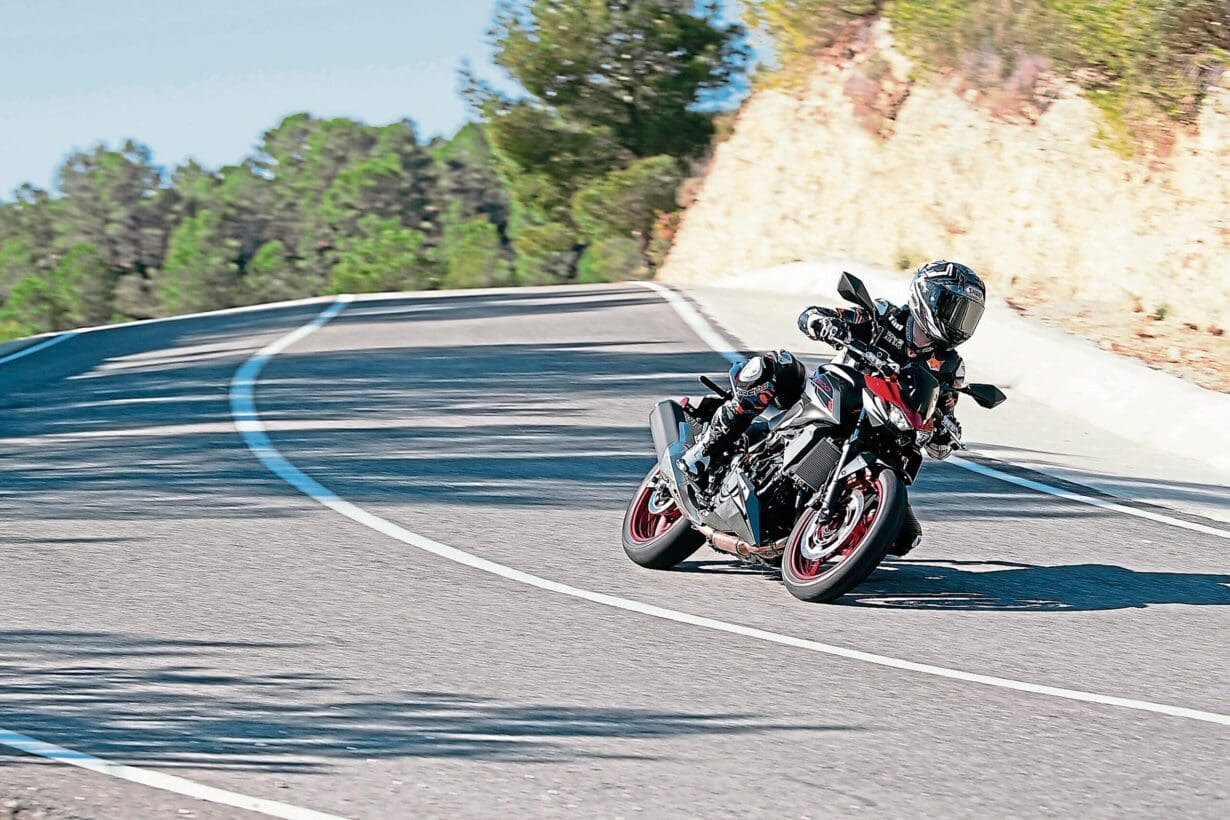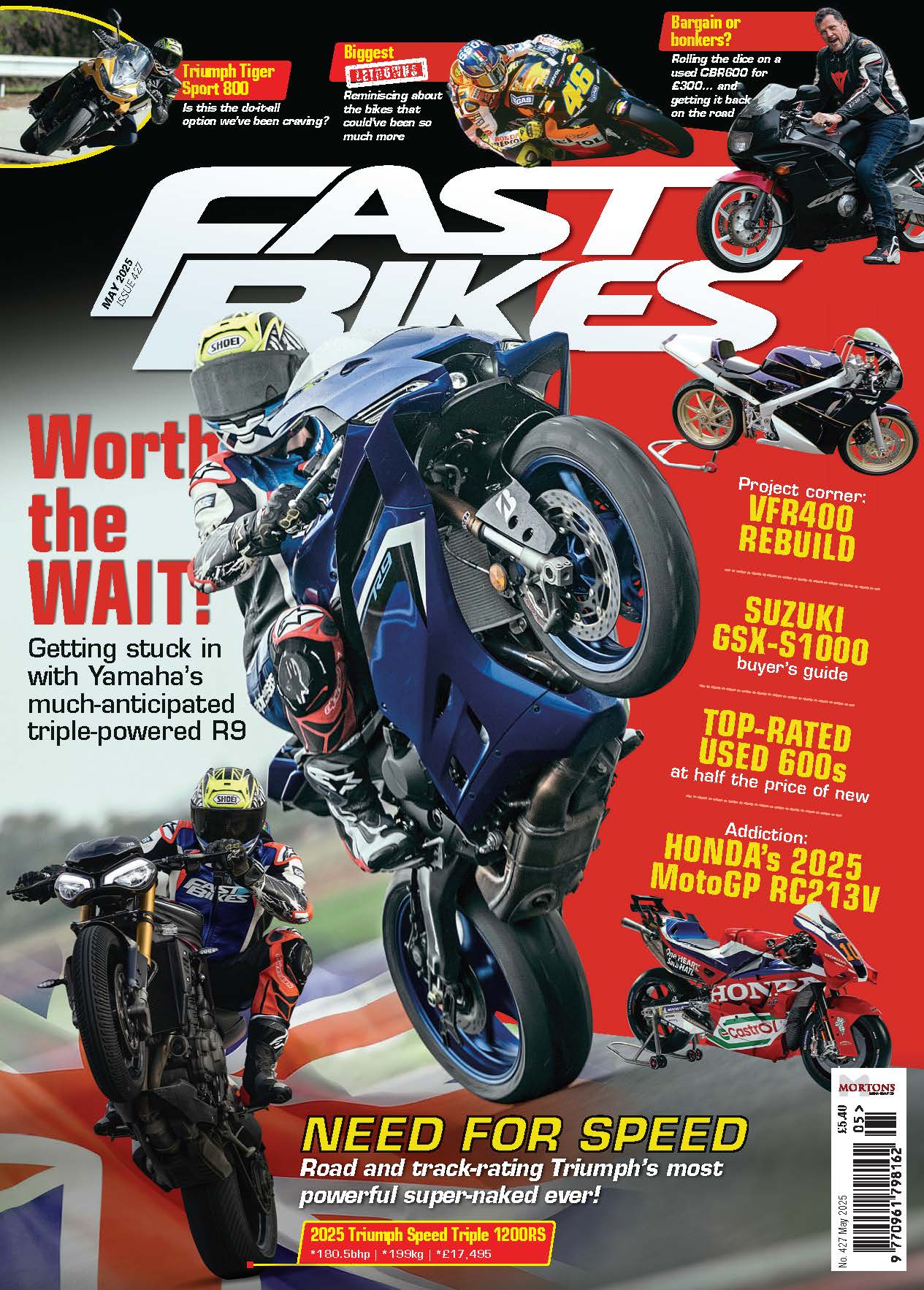Tim Neave rides Kawasaki’s new 500s. Here’s what Tim told MoreBikes:
I get so used to riding big bikes that it’s often all too easy to overlook the smaller-capacity motorcycles – and just like myself, good things come in small packages. With the European midrange markets looking as healthy as ever, this is exactly where Kawasaki needs to be with exciting new machinery, so without further ado, allow me to introduce the new Kawasaki Z500 and Ninja 500.
I don’t spend much time in the saddle of twins anymore, but it’s not that many years ago since I started out on my very own Tarmac journey with twin-cylinder motorcycles and can vividly remember how fun and fast they felt – and riding Kawasaki’s new Z and Ninja prompted a lovely trip down memory lane.

For the eagle-eyed Kawasaki fans out there, you’d be right in thinking this new 500 is basically identical to the outgoing 2023 Z and Ninja 400s, which have been around for a while; it’s still a twin-cylinder A2 machine, but with a slighter bigger ‘500’ engine – namely, a longer stroke with the same size bore, which takes it up to 451cc rather that 399cc. With the revised engine, Kawasaki has dramatically closed the gap to rival the competition from other manufacturers, and even though it falls slightly short on cc and horsepower compared to the Honda CB500, for example, it wins by 10 per cent when it comes to power-to-weight ratio, which is a huge advantage. In racing, this advantage will probably go out the window when all bikes are stripped of their road-going clobber, but it’s still a bloody good stat for the Kawasaki rider.
This revised motor pops out 45.4hp at 9000rpm and 42.6Nm of torque at 6500rpm, and for you spec nerds out there, while the peak horsepower shows little improvement to the old 400, the torque figures skyrocket in the midrange, which is where you’ll feel the real gains with this machine – a huge step forward when you compare it to the figures from the previous 400. Alongside the bigger stroke, this has been achieved by improved airflow to the cylinders and larger 32mm circular throttle valves, resulting in improved throttle response, acceleration, and fuel economy, which is always a little sweetener.
As far as the chassis is concerned, there really isn’t anything new about it when you compare it to the old 400 machine, and looking even further back, it’s basically an evolution of the 250 frame, making for a slim and lightweight design. It comprises a tubular steel trellis cradling the engine, and the swingarm is square section, which brings some rigidity to the package. Adjustable 41mm Showa forks and a bottom link uni-trak Showa shock is fitted to soak up the bumps and give you all the support to ring its neck. Interestingly enough, the fork spring is slightly stiffer in the Ninja (to cope with the expected sportier riding style) than in the Z500, a nice little detail from Kawasaki so we get the most from the package.
They are very different to look at, and I don’t need to spell it out: they are appealing to two completely different styles of rider. The Z leans towards the commuter who might ride in their casuals, while the Ninja is for the race fan wearing a leather suit. It goes without saying that I’m of the latter persuasion, and I’m really digging the sporty style and KRT colours on the Ninja. However, from a practical riding point of view, the Z was more favourable in terms of rider positioning, and that would be thanks to the straight handlebars which naturally puts the weight of the rider more over the front of the bike and, for me, gave a much better sense of connection with the Tarmac; I felt more confident to push the front.
The biggest downfall with the Ninja, in my opinion, is the swept-back, race-style handlebars, which are fixed in a far too narrow position. As good as this is for a tuck position, who actually rides in such a position on the road? The Ninja fairing also extends way out in front of the clocks, which made the bike feel long and boat-like with a distant front end, but I think riding both models back-to-back really brought this difference to the forefront. It’s something I’d soon dismiss if riding only this bike, as the geometries are fundamentally the same, so it really can’t be too different in terms of weight distribution.
Other than its appearance, the only other perk of the Ninja would be its firmer suspension set up, which provided more support while braking and accelerating, and made the bike feel more reactive and precise. Other than that, both bikes performed very similarly and share the same dimensions and DNA, so it really is down to preferred aesthetic when it comes to choosing between these two, I’d say.
As far as tech goes, these bikes are very primitive, with no quickshifter, blipper or rider modes, but the fact of the matter is that these bikes really don’t need any of that. It saves money and is one less thing to go wrong. That said, would I want some tech on my sporty little Ninja? Of course I would! A quickshifter wouldn’t have gone amiss since it is a racy little number, but we didn’t have that luxury, and nor did I when I was racing mini-twins a few years ago, so I’m not going to lose any sleep over it.
The power delivery is so smooth and linear, and for want of a better word, numb, so traction control and anti-wheelie is also on the not-necessary list. ABS is a staple, however, and is very much a bonus if you’re a new rider looking for that extra confidence boost when it comes to braking. Although I could feel the ABS working, with a slight pumping sensation through the brake lever when I really anchored up, it wasn’t releasing the brakes and giving me that heart-skipping scare like some bikes do, so that was a good point.
The slip-assist clutch worked fantastically while pushing into corners and back shifting through the gearbox more times than I care to remember as I meandered my way around the technical, mountainous roads. Not once did it chatter or lock the rear wheel, which is pretty good going for a bike on skinny wheels.
When we returned to base after an incredible day of riding, I couldn’t help but laugh as I tried to remember the last time I had so much fun out on the roads, thrashing a bike through its entire rev range and chucking it around from one knee to the other. That’s the beauty of these little bikes, which you don’t get with the big bikes: you can literally pin the throttle back without worrying if it’s going to spit you off or whether you’re going to get done for speeding.




